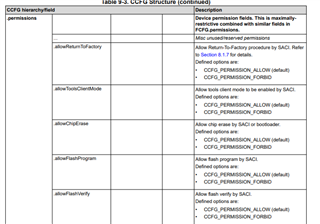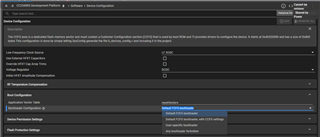Other Parts Discussed in Thread: CC2640
Tool/software:
Hi Experts,
I am currently working with the CC2340R5 BLE chip and implementing firmware flashing through the serial ROM bootloader via UART. The flashing process completes successfully, and the application runs as expected.
My procedure involves entering boot mode using the dedicated boot pin, followed by the typical sequence of commands: ping status, get ID status, and get part ID. After that, I issue the chip erase command, which executes successfully and erases the application sector as well as the CCFG sector. I then proceed to flash the application file.
since the chip erase command also erases the CCFG sector, which contains the bootloader configuration, any interruption during flashing causes the process to stop, and I am subsequently unable to re-enter the serial ROM bootloader mode.
I reviewed the Technical Reference Manual and found that CCFG and FCFG sectors can be protected using the following commands:
.flashProt.writeEraseProt.ccfgSector = 0 And.flashProt.writeEraseProt.fcfgSector = 0. but it did not work.
However, I noticed that the CC2340 ROM bootloader does not support a sector erase command, only a chip erase command, which unfortunately erases the CCFG sector as well.
Could you please advise if there is a supported method or workaround to safeguard the CCFG sector during flashing? I want to ensure the application can be reflashes multiple times without losing the bootloader configuration or encountering an unrecoverable state caused by CCFG erasure.
Regards,
Muthuraj K



